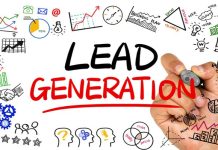City design, often referred to as urban design, is a multifaceted discipline that combines aesthetics, functionality, and sustainability to shape the physical, social, and economic aspects of urban areas. The design of cities influences the way people live, work, and interact with their environment. This article explores the intricate process of city design, examining its key principles, challenges, and the innovative approaches employed to create vibrant, inclusive, and resilient urban spaces.
I. Principles of City Design:
a. Functionality and Efficiency: Effective city design prioritizes functionality and efficiency. This involves carefully planning the layout of streets, transportation systems, and infrastructure to ensure optimal use of space and resources. Well-designed cities facilitate easy navigation, reduce traffic congestion, and enhance overall accessibility.
b. Density and Mixed-Use Development: Balancing density is a crucial consideration in city design. While high-density areas can foster vibrant urban life and reduce sprawl, it is equally important to create mixed-use developments that integrate residential, commercial, and recreational spaces. This approach promotes walkability, reduces commuting times, and enhances the quality of life for residents.
c. Public Spaces and Green Infrastructure: The incorporation of public spaces and green infrastructure is fundamental to city design. Parks, plazas, and green corridors contribute to the well-being of urban dwellers, providing spaces for recreation, social interaction, and relaxation. Green infrastructure also plays a vital role in mitigating the urban heat island effect and improving air quality.
d. Cultural and Historical Context: City design should be sensitive to the cultural and historical context of the area. Preserving historical landmarks, integrating cultural elements into architecture, and respecting local traditions contribute to a city’s unique identity and foster a sense of pride among its residents.
II. Challenges in City Design:
a. Limited Resources and Space: Many cities face the challenge of limited resources and space for expansion. Designing within these constraints requires creative solutions, such as vertical architecture, adaptive reuse of existing structures, and optimizing the use of available land.
b. Infrastructure and Transportation: Developing efficient and sustainable transportation systems is a persistent challenge in city design. Traffic congestion, inadequate public transit, and the need for alternative modes of transportation, such as cycling and walking, demand innovative solutions to create seamless and eco-friendly urban mobility.
c. Social Inequality: City design must address social inequality by promoting inclusivity and accessibility. Ensuring that all residents have access to essential services, educational opportunities, and recreational spaces is essential for building a socially equitable urban environment.
III. Innovative Approaches to City Design:
a. Smart Cities: The integration of technology in city design has given rise to the concept of smart cities. Through data analytics, the Internet of Things (IoT), and smart infrastructure, cities can enhance efficiency, monitor resource usage, and improve the overall quality of life for residents.
b. Resilient Design: With the increasing frequency of extreme weather events and the impacts of climate change, resilient city design has gained prominence. This involves creating infrastructure and buildings that can withstand environmental challenges, ensuring the long-term sustainability of urban areas.
c. Community-Centered Design: Adopting a community-centered approach involves actively engaging residents in the city design process. Participatory design methods ensure that the diverse needs and preferences of the community are considered, leading to more inclusive and people-centric urban spaces.
IV. Future Trends in City Design:
a. Green Roofs and Vertical Gardens: The integration of green spaces on rooftops and vertical surfaces is a growing trend in city design. Green roofs and vertical gardens not only enhance aesthetics but also contribute to environmental sustainability by improving insulation, reducing energy consumption, and promoting biodiversity.
b. Walkable and Bike-Friendly Cities: The emphasis on creating walkable and bike-friendly cities is gaining momentum. Urban design that prioritizes pedestrian pathways and cycling lanes not only promotes a healthier lifestyle but also reduces reliance on traditional transportation, mitigating traffic congestion and environmental impact.
c. Mixed-Reality Urban Planning: The use of mixed-reality technologies, such as augmented reality (AR) and virtual reality (VR), is becoming increasingly prevalent in city design. These technologies allow planners and residents to visualize proposed changes to the urban landscape, fostering greater understanding and collaboration in the planning process.
Conclusion:
City design is a dynamic and evolving field that plays a pivotal role in shaping the future of urban living. As cities continue to grow and face unprecedented challenges, the principles of functionality, sustainability, and inclusivity will be crucial in creating resilient and vibrant urban spaces. By embracing innovative approaches and involving communities in the design process, cities can become more than just physical spaces—they can become dynamic, thriving ecosystems that enhance the well-being of their inhabitants and stand as testaments to the art and science of city design.










